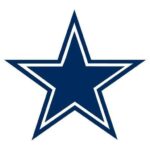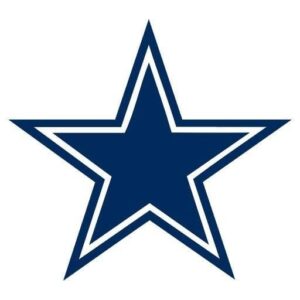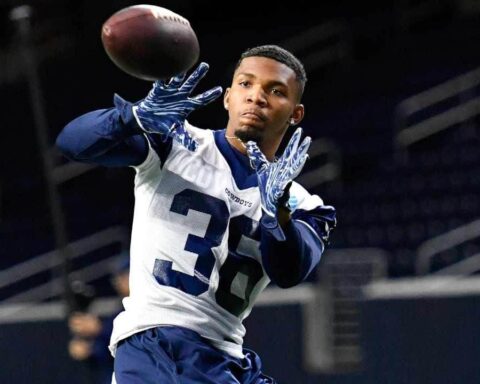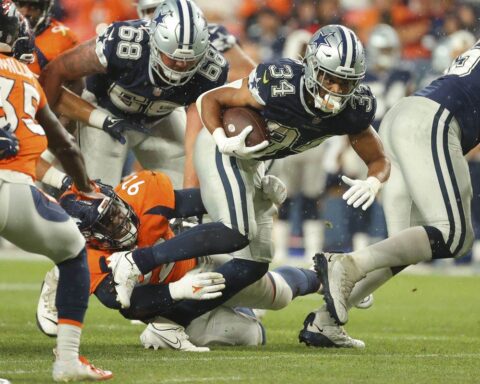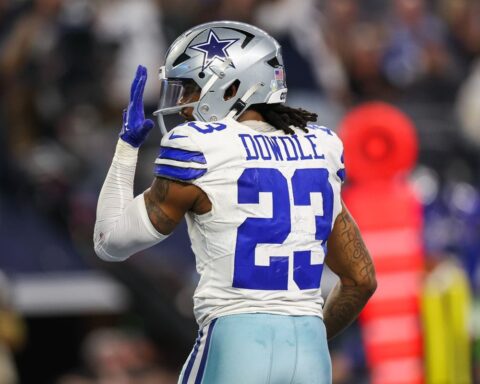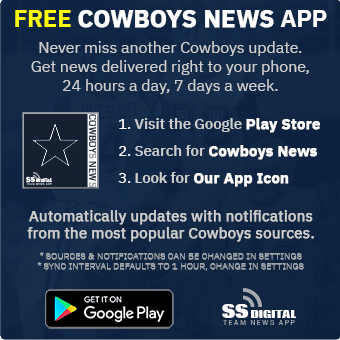When the Dallas Cowboys selected Will McClay’s “pet cat” in the 2019 NFL Draft, people had visions of versatility dancing in their heads. Tony Pollard, the fourth-round pick out of Memphis cane into the NFL listed as a running back, but his resume in college showed a player that shouldn’t have been pigeon-holed to begin his NFL career.
Unfortunately, that’s just what happened.
Under Jason Garrett, it’s been widely known that unless you’re a first-round pick, are an offensive lineman, or there’s an injury, rookies aren’t going to get a lot of playing time.
We saw it with Byron Jones, who moved around his rookie season before they finally settled on safety for him. We saw the same thing with Chidobe Awuzie before he settled in as a Cornerback his rookie season. Michael Gallup had to wait until the Cowboys ran through veterans like Terrance Williams, Deonte Thompson, and Allen Hurns before getting a full-time opportunity.
So, it should come as no surprise that the Cowboys limited Pollard’s involvement in the offense to snaps only as a running back. He was useful as a backup to Ezekiel Elliott, but limiting him to second running back snaps limited the potential he could bring to the offense in 2019. With Blake Jarwin as evidence, again, it should come as no surprise.
Now, with a new coaching staff, and Pollard going into his second year, there’s an opportunity for him to find a more significant role with Mike McCarthy’s influence on the offense.
While McCarthy was in Green Bay, he placed a high value on versatile players who could line up as both a wide receiver and a running back.
Randall Cobb did both things for the Packers during his tenure. However, more recently, there’s a name that might fit what the Cowboys could do with Tony Pollard. And that’s Ty Montgomery.
While Randall Cobb could get snaps as a running back, he was predominantly used as a wide receiver during his time in Green Bay. Montgomery started his career as a wide receiver and then made the transition to running back when the Packers suffered injuries at the position.
The 2016 season was Montgomery’s best in the NFL. For the Packers that year, he played in 15 games and started six of them. Throughout the 2016 season, he carried the ball 77 times for 457 yards (5.9 yards per carry) and three touchdowns. He also notched 44 receptions on 56 targets for 348 yards (7.9 yards per reception). Montgomery totaled 20 rushes for a first down and 20 receptions for a first down. He also returned 18 kickoffs for an average of 20.8 yards per return with a long of 40 yards.
Combining his carries, targets, and kickoff returns, Montgomery averaged 10 opportunities a game for the Packers. In his rookie season with the Dallas Cowboys, Tony Pollard averaged just 7.6 opportunities per game.
The most significant difference, however, is that Montgomery saw his opportunities in moments that mattered while Pollard was relegated to spelling Ezekiel Elliott or mop-up duty during blowouts.
52 of Tony Pollard’s 86 carries came in four games.
Kellen Moore and the Dallas Cowboys coaching staff needs to figure out a way to get Pollard involved in the offense more frequently. He showed incredible balance in his rookie year and an ability to make people miss as well. He was dynamic with the ball in his hands when he did get an opportunity.
If there’s an area where they can get him involved more is in 20 personnel in either a split-back look or splitting him into the slot as a wide receiver.
At Memphis, Pollard caught 104 passes for 1,292 yards and nine touchdowns over three seasons with the Tigers. He was a versatile player who could hurt defenses as both a ball carrier and pass catcher.
Though Ezekiel Elliott is the established starter and nothing will change that Mike McCarthy needs to see Tony Pollard as this team’s Ty Montgomery and get the ball in his hands.
The Dallas Cowboys have a plethora of potent weapons in the running game as well as the passing game, and Pollard is one of those. Making sure he gets around 10 opportunities to touch the football a game will only help the offense create more big plays.
Creating big plays is the name of the game. While the Cowboys were very effective going on 10, 12, and 15 play drives during the Jason Garrett era, it was an offensive plan that was unsustainable. You can’t ask your offense to be nearly perfect for 10-15 plays a drive every time they take the field.
Getting more big plays out of your offense means fewer plays per drive, which means fewer opportunities for a drive-killing turnover, sack, or penalty.
Tony Pollard is a big-play weapon, and in 2020, it’s time to make sure the Cowboys don’t leave that weapon locked away.
